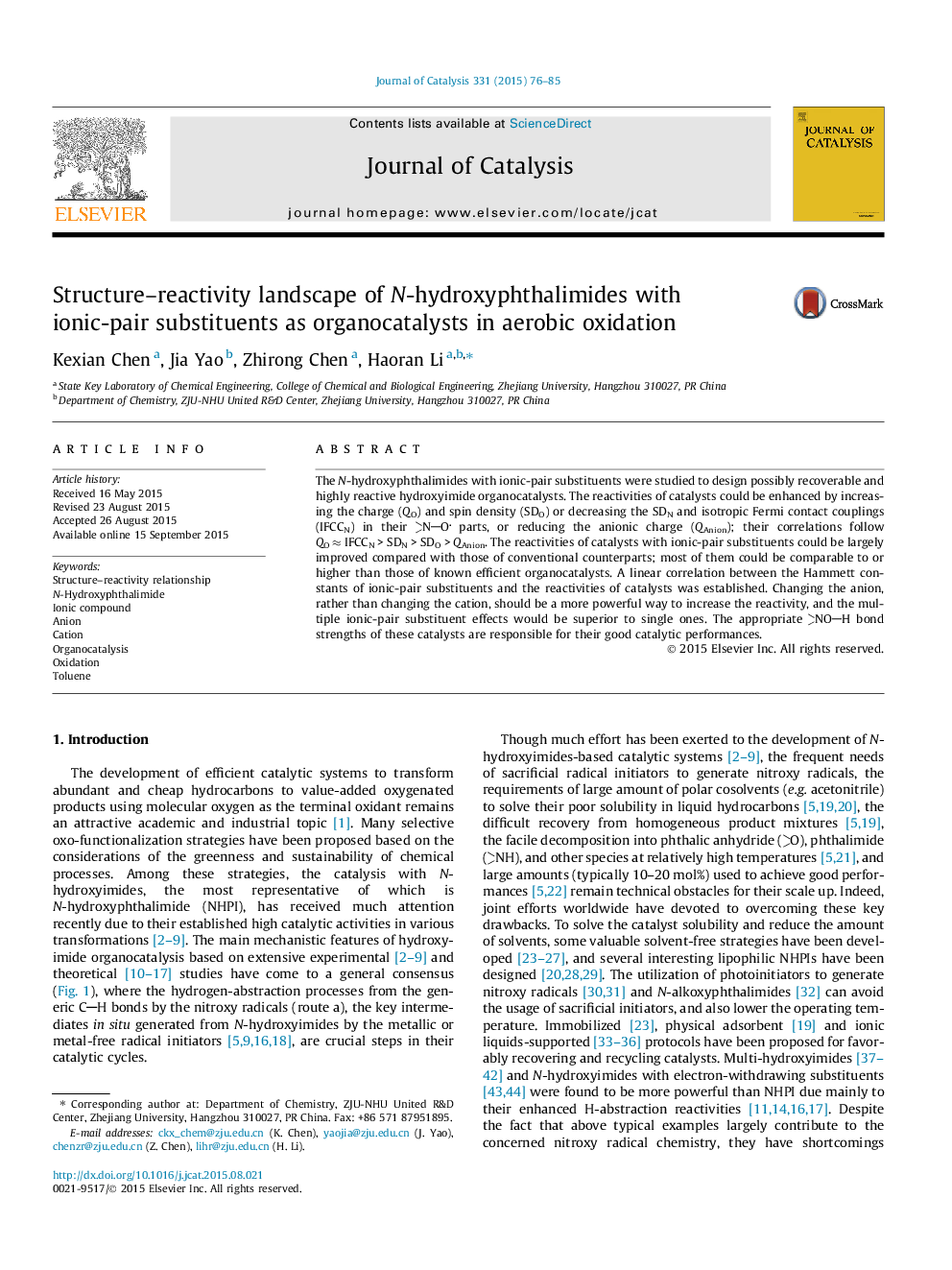| Article ID | Journal | Published Year | Pages | File Type |
|---|---|---|---|---|
| 60698 | Journal of Catalysis | 2015 | 10 Pages |
•Ionic-pair substituents could largely increase the reactivity of N-hydroxyphthalimide.•The correlation of parameters with the reactivity follows QO ≈ IFCCN > SDN > SDO > QAnion.•The substituent Hammett constants linearly correlate with the reactivities of catalysts.•Anionic and multiple ionic-pair substituent effects are powerful in catalyst design.•All catalysts have appropriate NOH bond energies responsible for good performances.
The N-hydroxyphthalimides with ionic-pair substituents were studied to design possibly recoverable and highly reactive hydroxyimide organocatalysts. The reactivities of catalysts could be enhanced by increasing the charge (QO) and spin density (SDO) or decreasing the SDN and isotropic Fermi contact couplings (IFCCN) in their NO parts, or reducing the anionic charge (QAnion); their correlations follow QO ≈ IFCCN > SDN > SDO > QAnion. The reactivities of catalysts with ionic-pair substituents could be largely improved compared with those of conventional counterparts; most of them could be comparable to or higher than those of known efficient organocatalysts. A linear correlation between the Hammett constants of ionic-pair substituents and the reactivities of catalysts was established. Changing the anion, rather than changing the cation, should be a more powerful way to increase the reactivity, and the multiple ionic-pair substituent effects would be superior to single ones. The appropriate NOH bond strengths of these catalysts are responsible for their good catalytic performances.
Graphical abstractFigure optionsDownload full-size imageDownload high-quality image (109 K)Download as PowerPoint slide
